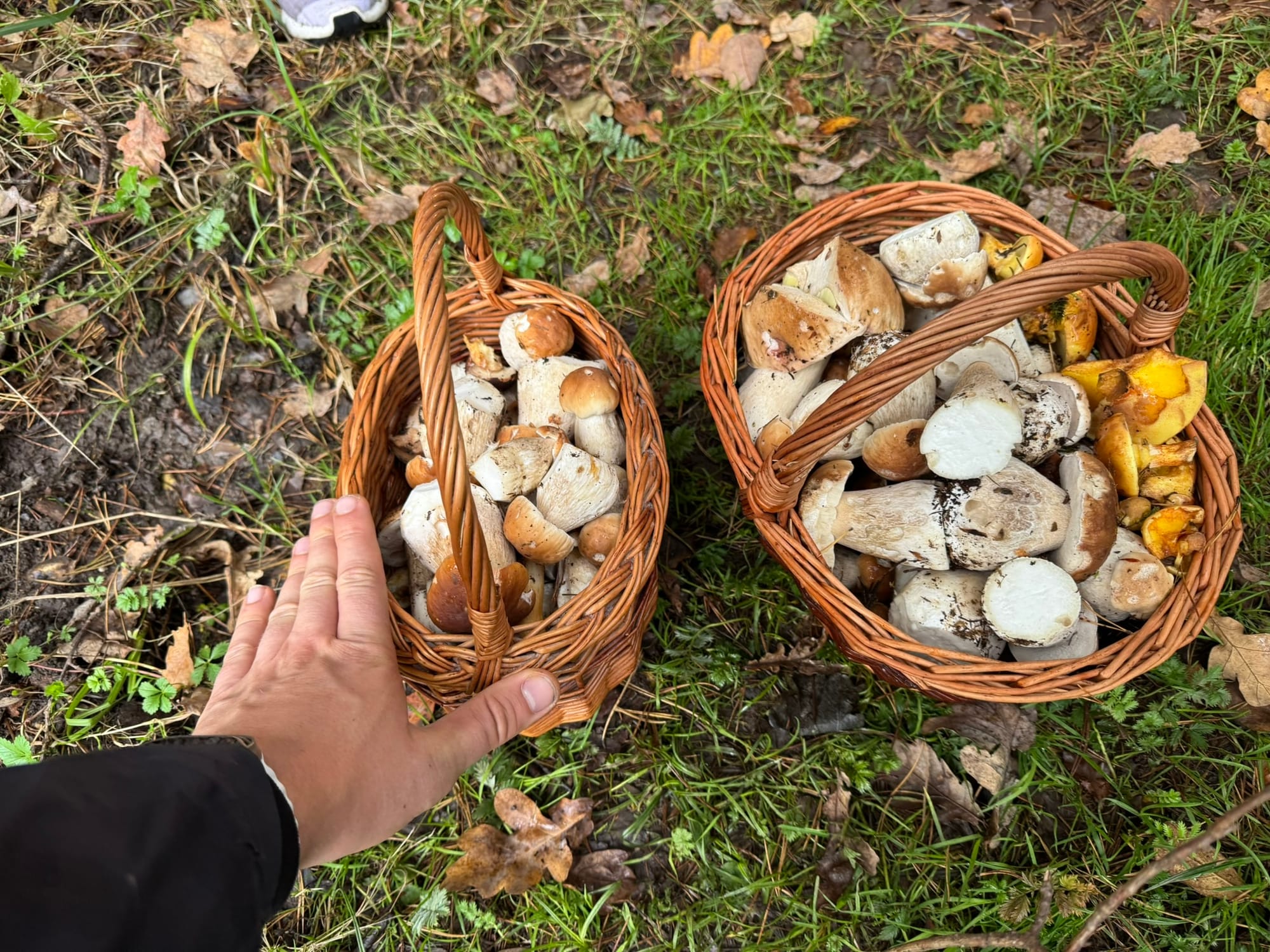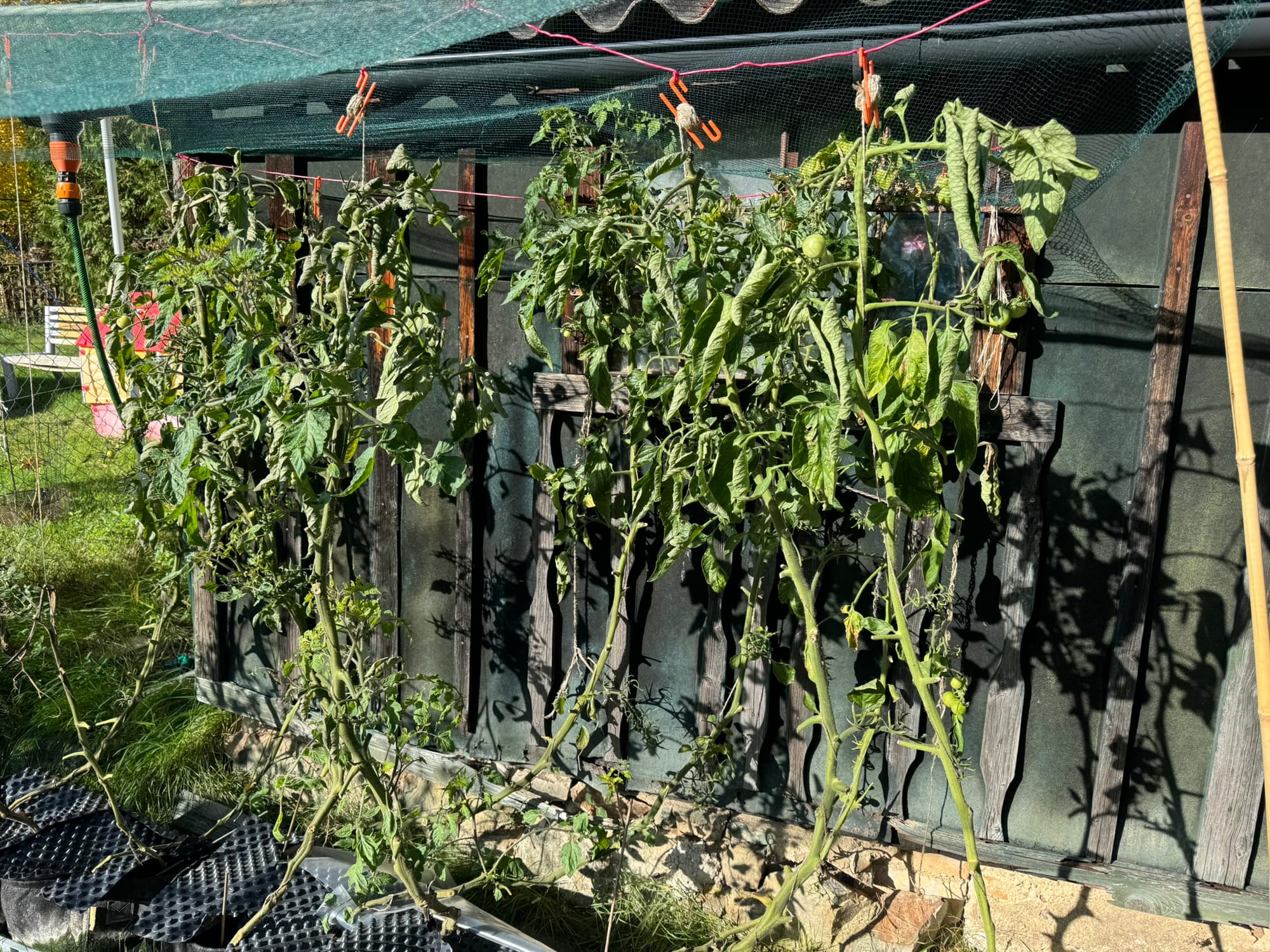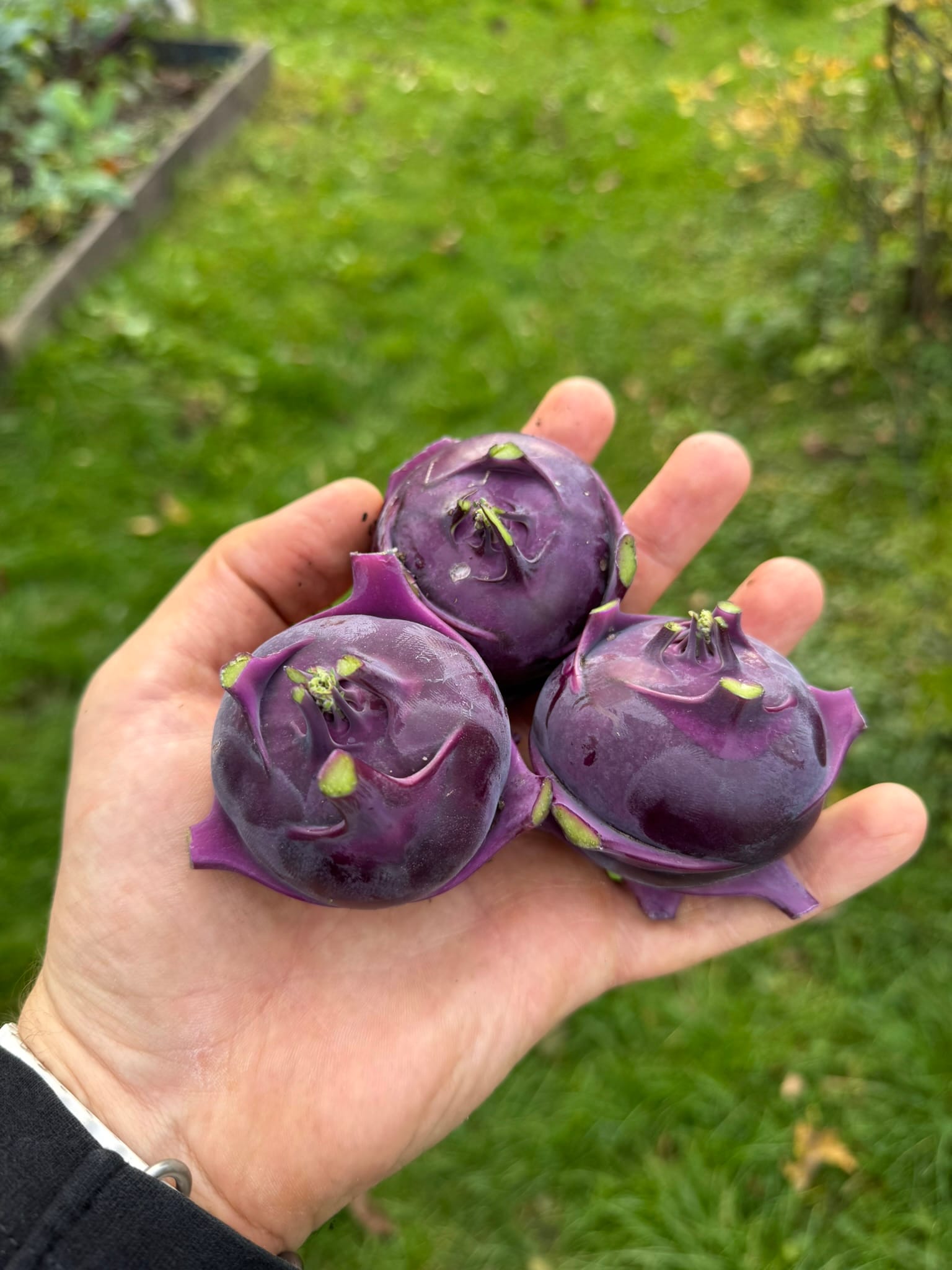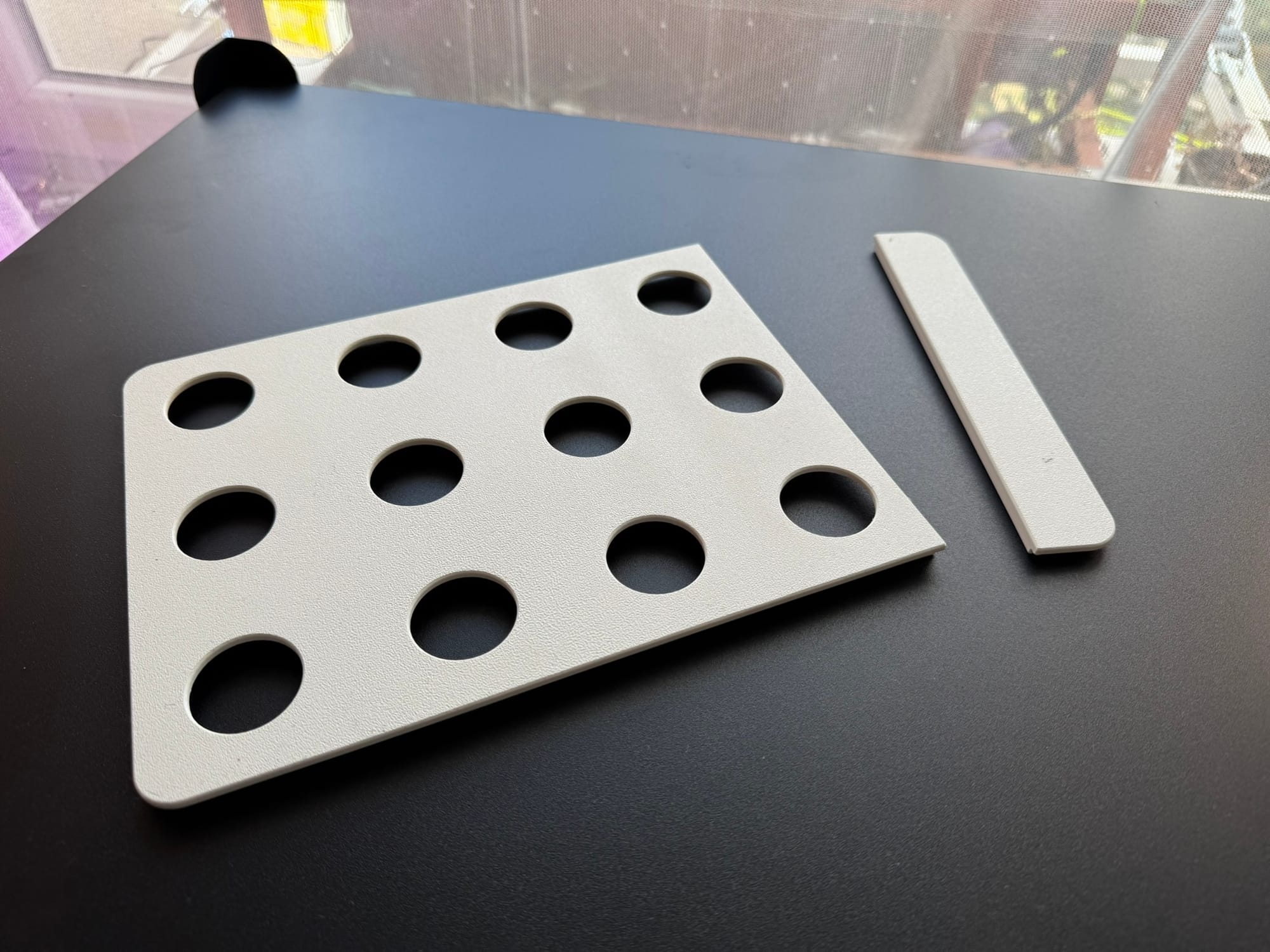October #8: It's so over

That’s it—it’s officially over for this season, and we have entered the gardening hiatus. On the other hand, it’s been a warm October, which brought us mushrooms—lots of mushrooms—but I’m getting ahead of myself. First, I have a confession to make.
I bought the BROR.




the everliving
It has been a great… exceptionally great season for tomatoes. I’ve never had such a bountiful tomato harvest in my life. Conditions were so favorable that I was still harvesting fresh tomatoes outdoors in mid-October. Let’s roll back a little; I sowed the tomatoes during the second week of March, almost seven months ago! Compared to the 2023 season, that’s nearly two months more. In 2023, I lost most of my plants due to wet weather at the end of August, which led to fungal infections and rot. This year, I was more aggressive with pruning and managing foliage, which probably helped my tomatoes survive a brief infection in July that affected some plants. Let’s look at the varieties individually, as some I’ll definitely grow again next year, and some I won’t.
- Red Robin tomatoes performed excellently. There’s no reason not to grow them again. I used seeds saved last year from some of the strongest plants, which paid off. Their compact size is perfect for the front part of my greenhouse, where they get a lot of sunshine without shading the back, which houses peppers. I’ll definitely grow these again.
- Sunviva is a new variety this year, and I call it the Deutsche Reichstomate because of its German origin. It’s my favorite tomato of the season—sweet but sour, juicy, and generally delightful. It produces a lot of fruit and is resilient to infections and fruit splitting. The only downside is the vine size; this plant vines prolifically, and I had to lower a few throughout the season. Without a doubt, I’ll grow them again.
- On the other hand, I doubt I’ll grow Primabella again. Last year, I grew Resibella and thought Primabella would be similar, but it’s pretty different. While the flavor is rich, production rates were low, and some plants showed deformities on the stems and leaves. The healthy plants did well in my hydroponic setup, but ultimately, I’d prefer to have a few more Sunviva plants over these.
- The classic, the old legend, Early Field Stupicke, also did well, and I’m pleased with them overall. While they’re nothing extraordinary, there’s something special about growing old varieties from my own country—a nostalgic appreciation for the old-timers who cultivated this plant. However, I won’t grow them next year to avoid disease buildup. All of them experienced some level of rot, and I worry that spores might be lingering in the environment. I might reintroduce them in two years but will likely replace them next year with Resibella, as its flavor and yield are similar.
- I’d love to tell you something about the Hawaiian Currant, but as you might have noticed, there is no Hawaiian Currant. The seeds were a complete dud—nothing sprouted. I’ll try some wild ones again next year.
- Lastly, there’s the Micro-Tom. While it doesn’t have the best taste, size, or yield, it can grow virtually anywhere. It’s so tiny it’s miraculous there’s even room for fruit. With the best size-to-yield ratio, this plant is a mainstay in my tiny apartment. What do you think is already growing in the BROR?



October, yet still going strong!
the last straw
Trees are shedding their leaves, which need to be collected and put to good use. That, along with the cool morning temperatures, prompted me to harvest the last crops left in the raised bed: beets and kohlrabies. The bulb sizes aren’t impressive, but the alternative would have been no beets or kohlrabies, as they replaced the cucumbers. This was my first attempt at succession planting in mid-summer, and I’m… not disappointed. If I had planted them earlier, while the cucumbers were still growing, I’m sure the results would have been better.



Now that the beds are empty, it’s time to prepare them for winter. I’ve emptied the tomato pots into the raised beds—I never reuse the same soil for tomatoes—and covered everything with mulch. I have plenty of fruit trees in my garden, so their leaves make great mulch. It’s even better if you mow the lawn one last time and mix the clippings with fallen leaves. The mower chops everything into a nice, fluffy mixture that goes directly on top of the soil, creating a cozy blanket for the bed. This layer keeps the soil warm enough for bacteria to remain active and helps prevent early weeds in spring. It’s particularly beneficial for winter crops like garlic, which thrive in nutrient-rich soil.
However, not all leaves in my garden are friendly or useful. You might remember how disappointed I was in April when frost killed my cherries and my neighbor’s walnut. While I welcome the leaves from my cherry tree, walnut leaves are an absolute nightmare. You can’t compost them over winter or use them as mulch because they acidify the soil, and you can’t leave them on the ground as they won’t decompose over winter. The options are to burn them, bury them deeply, or discard them somewhere soil quality isn’t a concern. The planet is warm enough, and I don’t have a permit for industrial machinery, so the last option it is. Walnut leaves will eventually decompose but can persist as late as June.

While cleaning the tomato pots, I also checked the performance of the terracotta irrigation spikes. Most of the time, the moisture seeped through the soil evenly, and only on hot days did I add some extra water. The root balls I inspected were healthy, showing no signs of damage. Interestingly, even if the soil got slightly dry during the day, evaporation rates through the leaves slowed so much at night that the soil rehydrated, supplying the plants with enough water for the next day. However, the design proved suboptimal—the lower half of the bracket, which holds the inlet and keeps it watertight, failed on some units. The loss of mechanical pressure caused movement in the seal, eventually leading to silicon seal failure. Although it didn’t leak, it’s only a matter of time. I need to redesign the lower part to be bulkier and experiment with other materials to integrate the terracotta and plastic better.

the defiance
Late fall and winter bring nature’s rest—unless, of course, you bring nature indoors and change its mind. Just add some grow lights and convince the plants it’s May again. That’s exactly my plan.
For a while, I’ve wanted a propagator, a small device designed to promote root growth. Though not exclusive to hydroponics, I intend to use it to jumpstart hydroponic seedlings. It’s surprising I haven’t built something like this sooner; it’s simple and useful for both young seedlings and cuttings of existing plants. I created a lid for spare KUGGIS lying around, and within two weeks, the roots were thriving, quickly filling the small container.




I initially used a Clonex Pro Start solution, then a weak Terra Aquatica Tri-Part solution to prepare the seedlings for full strength in the HALLBAR bucket.


Speaking of HALLBAR, I’ve made some quality-of-life improvements to the bucket, including replacing the pipe hole with a groove to insert the pump’s pipe and wiring easily. I redesigned the outlet hole with ribs to prevent clogs and added a new refill hole so I can refill it without removing the plant. I don’t want to get ahead of myself, but I’m confident I’ll be happy to release this version to the public.


The old bucket is on the left, and the new bucket is on the right.
I already mentioned the BROR, but I’ll hold off on details for now; I’ll cover it in depth in the next installment of my IKEA experiments. As a preview, though, here’s the current setup.


The MVP0. It still needs some refinement, but the design is generally done.
But that’s a story for another day. For now, I can share that I’ve set up the LIXHULT for winter with two buckets, each housing two plants. Part of the BROR project involved new controller hardware, and yes, I know a USB power supply with a smart socket could have done the same job and wouldn’t take days to make. But I built the new controller because I wanted to—it keeps my brain go brrrr, and that’s what matters in the end. The new controller has three pump sockets, a 3-pin fan connector, and an I2C interface for a climate sensor for example. The LIXHULT still uses the old controller but with updated firmware, ready to connect to the future control server I plan to build. Eventually, I hope to create a small web app where I can adjust the watering schedules in the LIXHULT and BROR cabinets and view real-time humidity and temperature.
the retro
It’s been a rewarding season with many highlights. I’ve grown quite fond of my home office project, where I spent a lot of time over the months. Recently, I discovered the versatility of high-density fiberboard, and I plan to use it to repair some damaged areas in the shed next year.
Looking ahead, I want to clear out the old wood storage area to create more space for plants and build a large hotbed for cucumbers and melons, which will grow outside next year. The greenhouse will be dedicated solely to peppers and tomatoes.
But these are just plans, and the future may bring something different. Let’s see what the next year has in store. For now, winter has arrived, and it’s time to wait. Just last week, I removed the last peppers from my greenhouse, and in only three months, I’ll be sowing the first seeds of the new season!
Member discussion